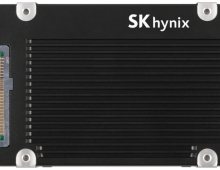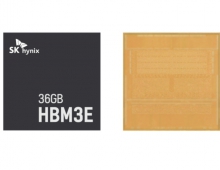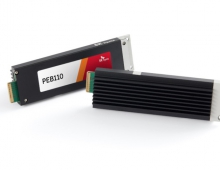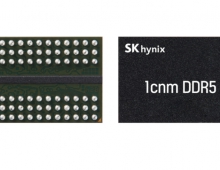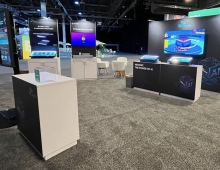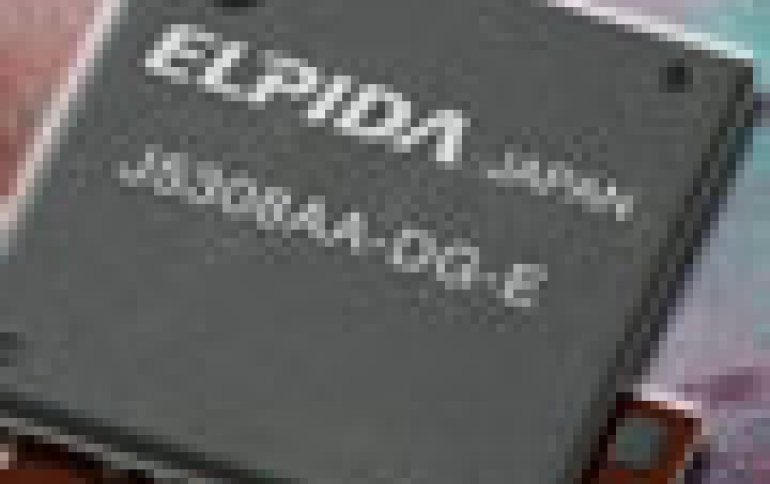
Elpida, Sharp Work On ReRAM Memory Chip
Elpida Memory and Sharp will work together on a next-generation ReRAM memory chip for commercialization in 2013, reported The Nikkei business daily.
The Resistive Random Access Memory (ReRAM)is a product that holds potential to replace the Flash memory currently used in mobile phones and MP3 players and to serve as a universal storage medium - that is, memory that can behave as Flash, DRAM or even a hard drive.
The ReRAM chip consumes less power and is capable of writing data 10,000 times faster than NAND flash memory, which is widely used in mobile devices, the business daily said.
The National Institute of Advanced Industrial Science and Technology, the University of Tokyo and other chip equipment makers will join Elpida and Sharp in this effort, the business daily added. The research group at the University of Tokyo claims that when ReRAM is used as the cache memory of an SSD (solid state drive), it is possible to reduce power consumption by 97% and to increase tolerable bit error rate, which is an indicator of operation reliability, by 260%.
Mass production, which will probably be handled by Elpida, is expected to begin as early as 2013, the paper said.
ReRAM is a generation non-volatile memory based on the principle of the difference in a resistance value of a dielectric material by applied voltage. It uses the unique characteristic of the memory where its state changes to on or off depending on the varying resistance value of the dielectric material and stores the digital signals of 0 or 1. It can be adopted in devices where large memory capacity, low voltage requirement and high speed performance is demanded.
Hynix Semiconductor and HP have also entered into a joint development agreement last month, with HP to develop memristor technology in ReRAM. The two companies will jointly develop new materials and process integration to deliver ReRAM to market by transferring the memristor technology from research to commercial development.
Fujitsu Laboratories Ltd. have been also engaged into the development ReRAM many years now.
Toshiba is also working on a new type of flash memory with a layered structure, while Samsung is developing ReRAM, PRAM or phase-change random access memory and magnetoresistive random access memory or MRAM chips.
Phase-change Random Access Memory (PRAM), known as perfect RAM, is the next generation memory chip which features the advantages of NAND and NOR flash memories. PRAM uses a material that turns crystalline when heated. The clrystalline bits represent the logical "1" in the binary system of computers, while amorphous areas (bits) represent logical "0" A key advantage in PRAM is its extremely fast performance. Because PRAM can rewrite data without having to first erase data previously accumulated, it is effectively 30-times faster than conventional flash memory. PRAM is also expected to have at least 10-times the life span of flash memory.
The ReRAM chip consumes less power and is capable of writing data 10,000 times faster than NAND flash memory, which is widely used in mobile devices, the business daily said.
The National Institute of Advanced Industrial Science and Technology, the University of Tokyo and other chip equipment makers will join Elpida and Sharp in this effort, the business daily added. The research group at the University of Tokyo claims that when ReRAM is used as the cache memory of an SSD (solid state drive), it is possible to reduce power consumption by 97% and to increase tolerable bit error rate, which is an indicator of operation reliability, by 260%.
Mass production, which will probably be handled by Elpida, is expected to begin as early as 2013, the paper said.
ReRAM is a generation non-volatile memory based on the principle of the difference in a resistance value of a dielectric material by applied voltage. It uses the unique characteristic of the memory where its state changes to on or off depending on the varying resistance value of the dielectric material and stores the digital signals of 0 or 1. It can be adopted in devices where large memory capacity, low voltage requirement and high speed performance is demanded.
Hynix Semiconductor and HP have also entered into a joint development agreement last month, with HP to develop memristor technology in ReRAM. The two companies will jointly develop new materials and process integration to deliver ReRAM to market by transferring the memristor technology from research to commercial development.
Fujitsu Laboratories Ltd. have been also engaged into the development ReRAM many years now.
Toshiba is also working on a new type of flash memory with a layered structure, while Samsung is developing ReRAM, PRAM or phase-change random access memory and magnetoresistive random access memory or MRAM chips.
Phase-change Random Access Memory (PRAM), known as perfect RAM, is the next generation memory chip which features the advantages of NAND and NOR flash memories. PRAM uses a material that turns crystalline when heated. The clrystalline bits represent the logical "1" in the binary system of computers, while amorphous areas (bits) represent logical "0" A key advantage in PRAM is its extremely fast performance. Because PRAM can rewrite data without having to first erase data previously accumulated, it is effectively 30-times faster than conventional flash memory. PRAM is also expected to have at least 10-times the life span of flash memory.

